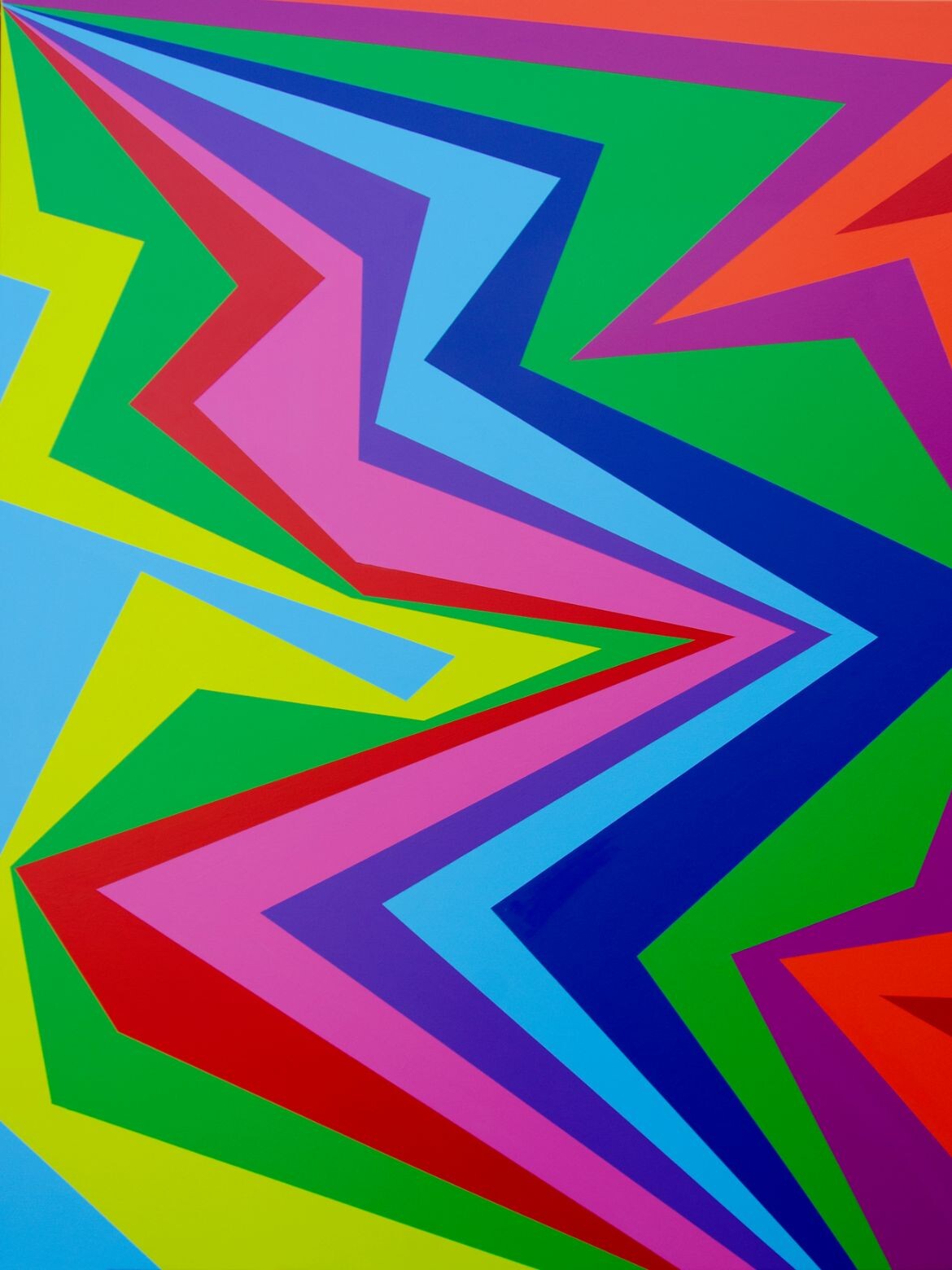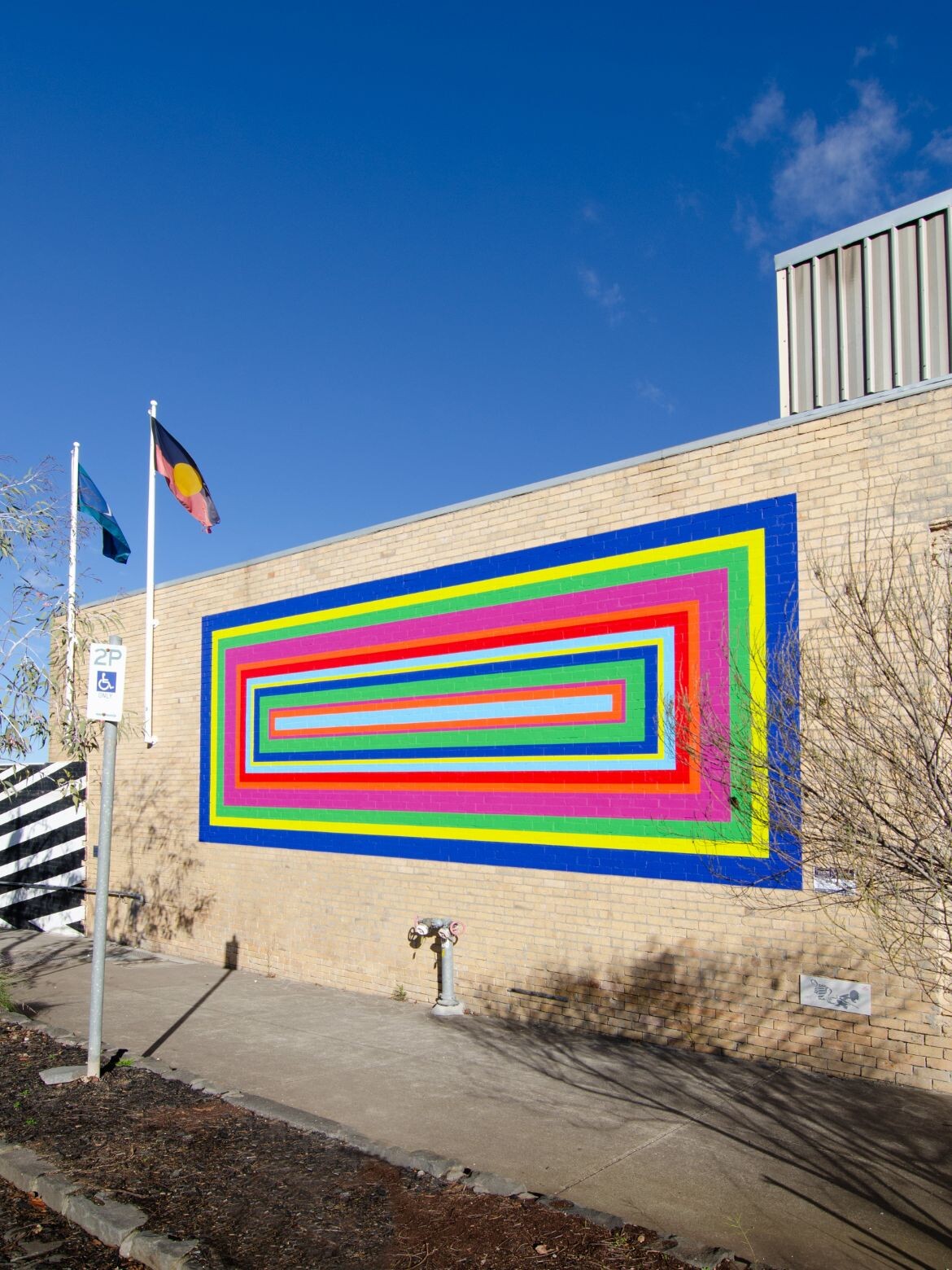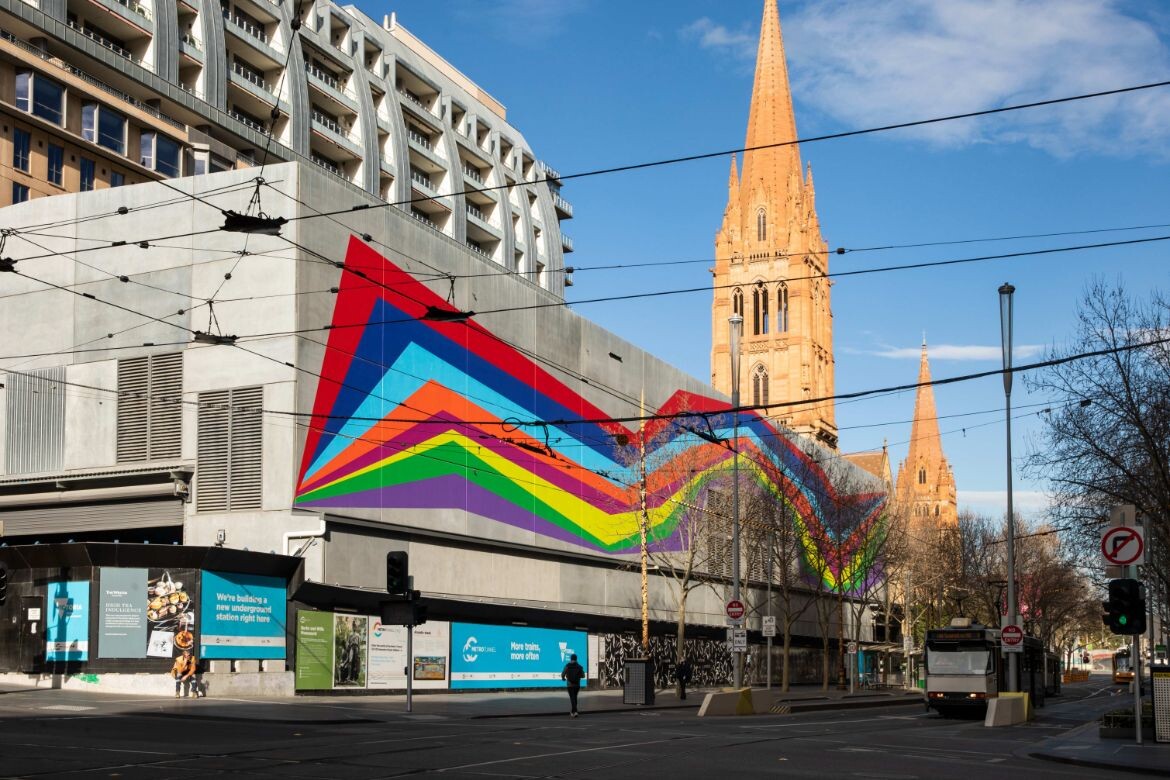Working across the fields of painting, sculpture, installation and public art, Emma Coulter’s work is hallmarked by bright, solid, colours exploring geometric abstraction. While her work is often articulated across the flat surfaces of a canvas or wall, creating the illusion of a three-dimensional sculptural form, she also works in sculpture, utilising common building materials such as steel and cast acrylic.
Through intimate knowledge of ‘her’ colours the artist deliberately manipulates scale, proportion and colour relationships to control the perceptual outcome. There is a mind-bending element at work here, when Coulter uses colour to recede where a shape comes out, or move forward, where a shape is convex.
The resultant work is often strange to look at and questions both border and depth. Her interior wall murals, or ‘spatial deconstructions’ (as the artist names them), are particularly interesting in their ability to read as a large coloured forms pushing into the space, challenging the perception of the viewer.
Indeed, chromo spatial manipulation can be summarised as colour-based artworks that use the relationships between colours: harmonious; complimentary; contrasting; and supporting, to create plains that seemingly shift sections forward and back in the picture plane.

Artist James Turrell uses this same methodology to create voids and forms. His work Alta Green (1968 Salta, Argentina) for example, fills all but the corner of a room with green light, the result is a seeming solid skewed pyramid form, complete with reflection, sitting squarely in the space. A simpler example is the positioning of a single dark shade below a light one to create shadow, and thereby three-dimensionality.
German-based, Katharina Grosse, is another artist who works with the spatiality of painting and colour, making gestural-based site-specific paintings, within rooms and buildings, reversing the idea of illusionism, by making immersive environments, with which one can walk in to.
Making her own mark in architectural space, Coulter, however, arranges colours that often create voids, or ‘cutouts’ and explosions of form with zig zags that shift forward and back as width becomes narrow or form becomes void. Stripes shift from positive to negative as they bend around space and surface.

“I work with colour in a serial way, through a refined colour palette; creating my own bold, idiosyncratic, spectrum, as a type of non-verbal language. Through my work, I am questioning the boundaries of art and where it belongs. I am interested in the transformative power of colour as a visual sensation and accessible language.”
For those in Melbourne, you might remember her recent commission: a 130-metre-long work, ‘spatial deconstruction #23 (resilience)’, which covered the outer walls of the Metro Tunnel construction site.
Occupying the entire city block of Melbourne’s most prominent intersection, “the work was intended as a gesture of resilience for the diverse communities of Melbourne, during the endurance of the Covid-19 global pandemic in which Melbourne was one of the most locked down cities in the world,” says Coulter.

For her up-and-coming solo exhibition with James Makin Gallery, Coulter will explore the idea of ‘infinite systems’, applying her colour methodology across various mediums to create spatial outputs. Excited by the potential outcomes, director Jessica Velasquez says, “Emma Coulter’s work has become synonymous with the public landscape, with major commissions in the Melbourne CBD and interstate. We are thrilled to be able to show her extended practice of paintings and sculptures, which offer the same dynamism and intrigue of her public works… It gives an exciting opportunity for collectors to acquire a piece by one of Melbourne’s most recognisable artists.“
Currently exhibiting as a part of the James Makin Summer New group exhibition, Coulter has exhibited in New York and Germany, and throughout Australia. She currently has two significant public art projects underway for Yarilla Place Arts Museum in NSW and for CREMA the Eighth development in Melbourne.
Her major solo exhibition, ‘Infinite Systems’ is slated for 15 June – 2 July, at James Makin Galleries’ beautiful new space in Collingwood, Melbourne.

